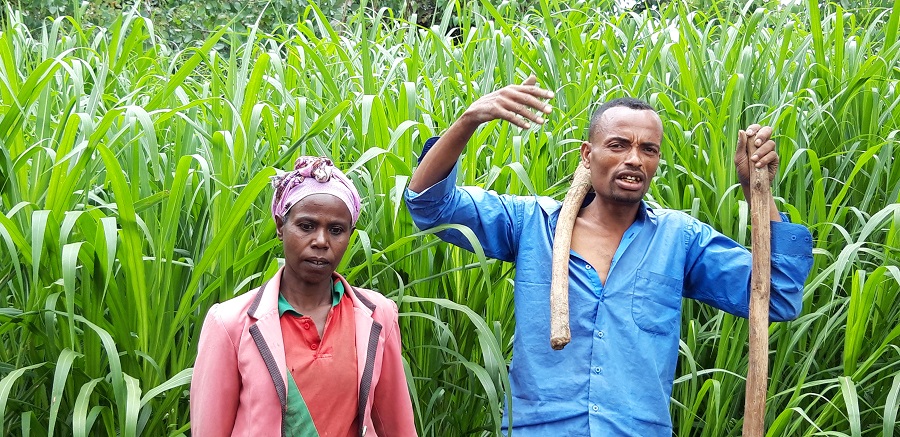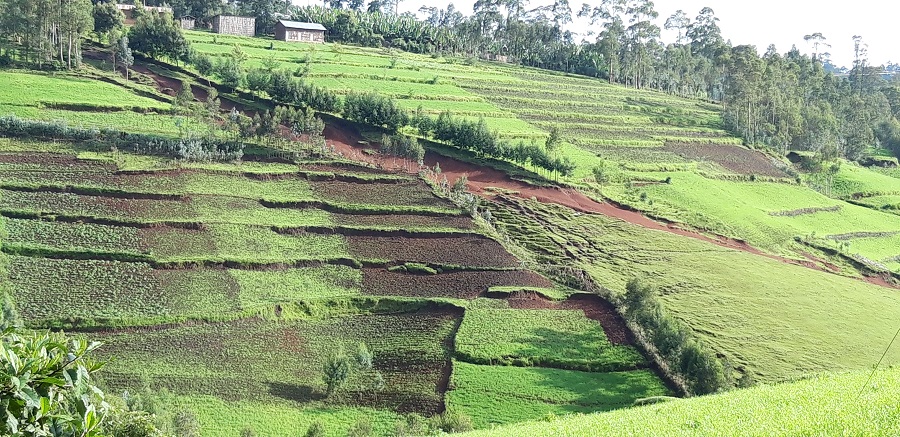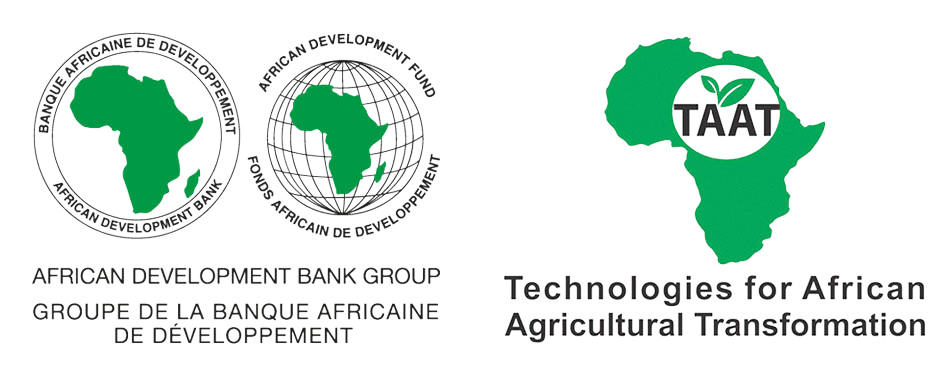
Beneficiaries of TAAT’s deployment of integrated soil-water conservation and forage production technologies in Ethiopia
Degefa is a 30-year-old farmer who attended formal education up to 7th grade. He is cultivating 0.25 hectares of land that he obtained from his father and he does not own any livestock.
He moved to the Ethiopian government resettlement sites in the hope of getting access to larger area of land and has been living there for 10 years. However, he could not continue living at the site because of ongoing conflict in the area in which has claimed lives and property.
Disappointed at the tun of events, Degefa returned to his place of origin empty-handed to begin life afresh in 2018. Since he has very small plot of land, he had to make important decisions on which crops he must grow in order to sustain himself.
This was not only because of the small size of his holding but also the low productivity of the already severely eroded and degraded land on very steep slopes, under unpredictable weather conditions.
Crop yield was low as evident from his neighbours’ yields.
At this junction, he learnt about Technologies for African Agricultural Transformation (TAAT) and its collaboration with Inter-Aide on integrating fodder production into anti-erosive structures for soil and water conservation and livestock feed in Bonga and Doyogena in the Southern Nations, Nationalities and Peoples region (SNNPR) of Ethiopia.
Sponsored by the African Development Bank as part of its Feed Africa Initiative, TAAT’s main objective is to improve the business of agriculture across Africa by raising agricultural productivity, mitigating risks and promoting diversification and processing in 18 agricultural value chains within eight priority intervention areas.
The programme increases agricultural productivity through the deployment of proven and high-performance agricultural technologies at scale along selected nine commodity compacts which include livestock.
These work with six enabler compacts addressing transversal issues such as soil fertility management, water management, capacity development, policy support, attracting African youth in agribusiness and fall armyworm response.
Led by the International Livestock Research Institute (ILRI), the TAAT Livestock Compact (TLC) seeks to increase the productivity and profitability of small animal value chains through upscaling innovations in livestock genetics, feed, health, production systems, policy and marketing.
Upon invitation and participation in a sensitization and training session on the integration of fodder production into anti-erosive structures for soil and water conservation and livestock feed, Degefa evaluated all the options and the lessons he learned from the TAAT-Inter aide intervention, and took a big leap.
With the approval of Birke, his wife, Degefa decided to establish backyard forage nursery and build anti-erosive structures to rehabilitate their land. They obtained some Brachiaria rooted tilllers (planting materials) from the TAAT-Inter Aide project. It wasn’t much, but that was all that was available.
They established about 1,250sqm backyard nursery as source of planting materials for wider multiplication. Now the waiting game through the dry season began. In the meantime, Degefa undertook manual labour to raise some income to feed his family. He was also on food aid support from development partners.

Degefa and Birke kept faith and nurtured their nursery with care and single-minded devotion. Come the next rainy season, they transplanted the splitting of the roots on their land and on any available border spaces and built anti-erosive structures, to check further soil erosion and nutrient loss, as guided by Inter-Aide technicians.
After a short rainy season, the productivity of the grass was so good, it was estimated to be about 2.0 tons (equivalent to ~8 tons/ha) and still growing. When Degefa and his wife harvested their first cutting of Brachiaria, it filled seven Donkey carts, which he sold in the nearby town market to livestock producers at nearly 2,000 ETB (~USD 67.00). Each cart load was sold at 300 ETB. He pays 15 ETB (~USD 0.5) for each donkey cart usage. He is able to harvest up to 4 times per year, thus making about 8,000 ETB (~USD 267.00) from selling grass.
With this, he was able to buy grains to feed his family, bringing to an end, his dependence on food aid.
The luxuriant growth of the grass in one rainy season was a pride to Degefa. Asked if he used fertilizers or manure to achieve this growth, “No” was the blunt answer from Degefa. When asked if he would contemplating planting crops in the future, ” i will rather plant grass than grains”, he retorted.
On closer examination, it was realized that the anti-erosive structures have helped retained nutrients that would have been lost to erosion and these have contributed to increased productivity of the grass. Now the whole of Degefa’s farm plot is covered with Brachiaria grass.
In addition to the cut forage, Degefa is also selling forage planting materials to other farmers. He is also growing Guatemala grass (Tripsacum laxum), Bana grass or elephant grass (Pennisetum purpureum) and desmdium.
With contributions from Adeniyi S. Adediran & Getachew Feye

